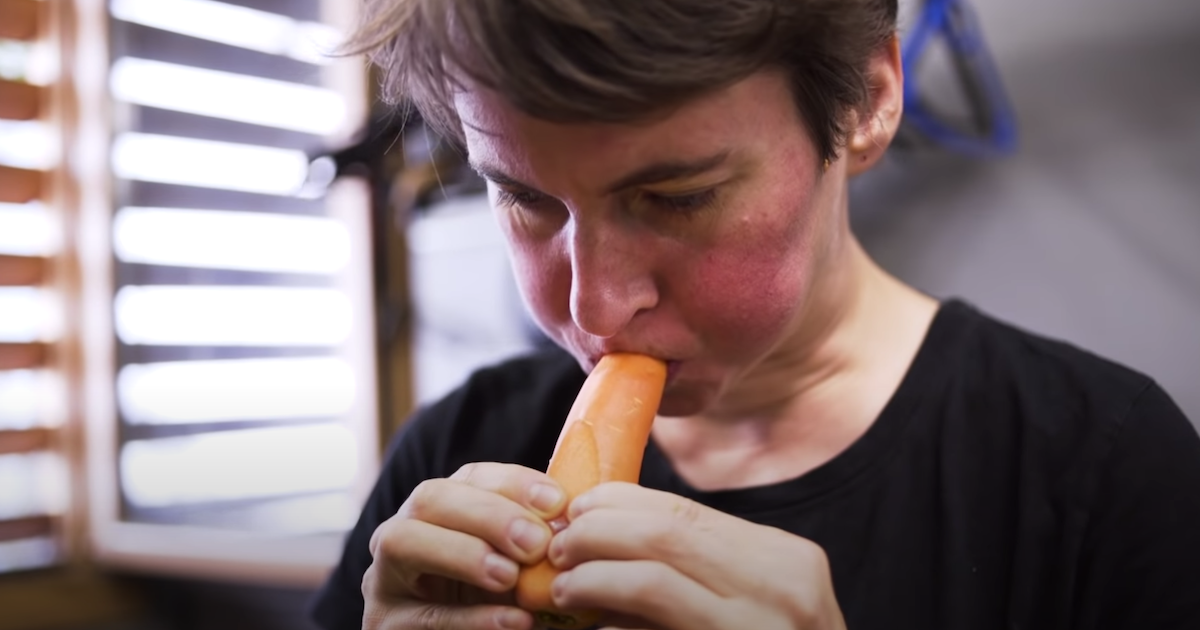Music is all around us.


Generally speaking, it’s just waiting to be made.
We are all familiar with the many who have serenaded the world with traditional methods including guitars, violins, and pianos. However, in the hands of the right person, any object can be used to make music. Simply put, there are those who have exceeded our wildest dreams and expectations using anything—even a carrot.
Yes, even vegetables can be made into musical instruments.


Take the Vegetable Orchestra, for instance.


They are also known “Das erste Wiener Gemüseorchester,” “The First Vienna Vegetable Orchestra” or “The Vienna Vegetable Orchestra.”


And while their production methods are somewhat unconventional, they prove that music is universal and is indeed all around us, just waiting to be made.


This sensational group was founded in 1998 in Vienna.


The group consists of ten musicians, one cook and one sound technician.


Aside from making music, the members of the ensemble are all equally active in other artistic avenues.
Some members are actual trained musicians while others are poets, sculptors and architects. Together, they’ve been able to craft and conduct a unified vision for the orchestra.
They’ve been working diligently to deliver a multi-sensory experience to captivate audiences far and wide.


Jörg Piringer, a musician in Austria’s Vegetable Orchestra, revealed in an interview with CityLab that there’s almost no corner of the grocery store that can’t be fashioned into a musical instrument.
“A pumpkin works very well on its own as a bass drum, and you can make all sorts of instruments—like flutes, recorders and xylophones—from carrots,” he says. “Rub two leeks together like they were a violin and a bow, and you get a sort of squeak that can be really very loud. Onion skins rubbed together also make a nice maraca-like rustle.”
As it stands, the orchestra entertains its fair share of vegetable members, including carrots, cucumbers, peppers, squash, eggplant and zucchini. But because produce spoils, they are made into new instruments prior to every performance, and the soundcheck is generally extended as the orchestra finely tunes and dials in their creations.
Since its inception, the orchestra has invented more than 150 vegetable ‘instruments’ over the years.


And while the entire project may seem a little crazy, it’s become a very sustainable movement, capturing the hearts of many.
The band has three albums, and numerous international tours beneath their belts. And ingenuity has been the answer to their success.
“You don’t need to have tons of money or training—all the things that people think are so important for making music,” says Piringer.
Over the past 18 years, The Vegetable Orchestra has played tons of events, engaging a global audience. From art gallery openings to museums to community events, they’ve played it all.


According to an interview with the BBC:
“’One of the most fascinating things about touring is learning how food differs around the world and coming up with completely new instruments,’ said calabashist and pumpkinist Jürgen Berlakovich. In South-East Asia, the group discovered an elastic garlic grass that made a great bass string. In the US, they found markets that sell giant agave leaves, which can be used to shake kidney beans like a maraca. In China, the water radishes are bigger. In Italy, the cucumbers are smaller. In Siberia, the vegetables are expensive. And in England? “Turnips,” Meinharter said. ‘Lots of turnips.’”
Check out this fascinating group for yourself in the story linked below.
Please SHARE this with your friends and family.









